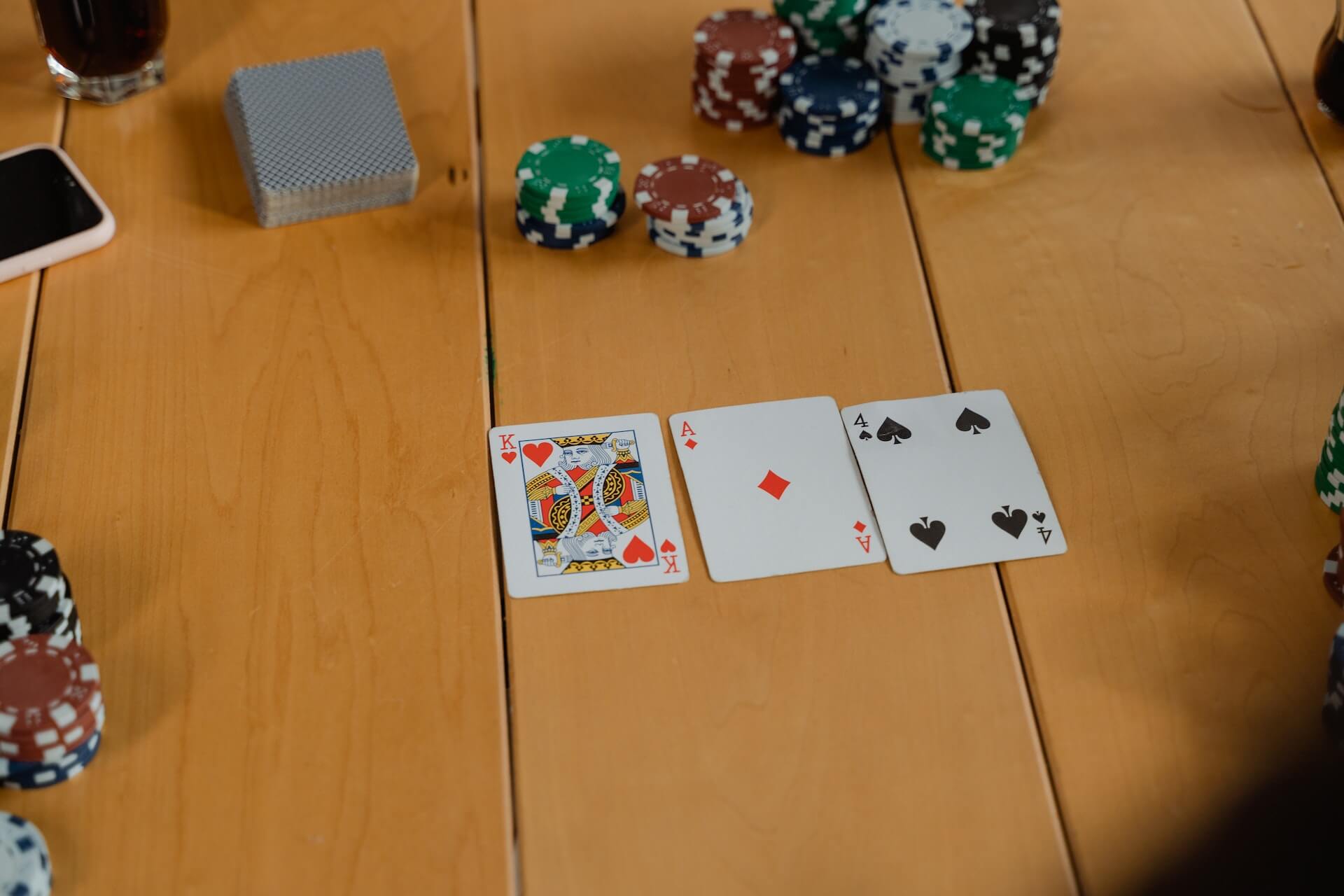Physical Address
304 North Cardinal St.
Dorchester Center, MA 02124

Individuell gestaltete Spanischkurse für unterschiedlichste Bedürfnisse

Individuell gestaltete Spanischkurse für unterschiedlichste Bedürfnisse

Do you want to avoid traditional language-learning methods that leave you bored and unengaged? Do you crave a more exciting, interactive approach to mastering new vocabulary and grammar rules? Look no further than gambling-inspired techniques!
That’s right — the world of gambling has inspired a revolution in language learning. By incorporating elements such as competition, risk-taking, and reward systems into your study routine, you can transform your language skills from mediocre to magnificent.
This article will explore how these techniques work and why they’re so practical for learners of all ages and levels. So place your bets and get ready to hit the jackpot with your language abilities!
Interactive software and behavioral psychology have revolutionized the way we approach language learning. Language learners now have access to various interactive tools designed to make the process more engaging, immersive, and fun.
These tools leverage principles from behavioral psychology to create a sense of reward and progress as learners advance through their studies. One of the key benefits of using interactive software in language learning is that it allows learners to practice in a safe environment without fear of judgment or embarrassment.
This software provides instant feedback on pronunciation, grammar, vocabulary usage, and other aspects of language acquisition. By incorporating elements such as point systems, badges, leaderboards, and achievements into these programs, creators can tap into our innate desire for competition while motivating us to continue learning.
In this section, we will explore how gamification techniques can be used effectively in language learning by harnessing the power of competition and motivation.
Our previous section explored the science behind gamification in language learning. By incorporating game-like elements into language learning activities, students are motivated to learn and engage with the material more effectively.
Let’s look at how friendly rivalry and goal-setting can further enhance this process.
Friendly rivalry is an excellent way to motivate learners and make the learning experience more engaging. When learners compete against one another in a friendly manner, they become more invested in their progress and strive harder to achieve their goals. Additionally, competition teaches valuable skills such as teamwork, communication, and sportsmanship.
Pairing up learners of similar skill levels for group projects or quizzes can foster healthy competition while encouraging cooperation and collaboration toward a common goal. Goal setting is also crucial when it comes to motivating learners; by having clear objectives they want to accomplish, students can track their progress and measure their success over time. This accomplishment encourages continued engagement with the material and reinforces positive learning habits.
As we’ve seen so far, introducing gambling-inspired techniques like friendly rivalry and goal setting can transform the language-learning experience for all involved parties — from teachers to students alike. But what about risk-taking? Stay tuned for our next section, where we’ll explore why making mistakes is vital when taking risks in language learning!
Embracing failure is an essential component of the language learning process. Many learners fear mistakes, but it’s necessary to understand that making errors is a natural part of experimentation and growth. Studies show that embracing failure leads to tremendous success in the long run.
Here are four reasons why it’s essential to experiment and take risks when learning a new language:
By understanding the importance of experimentation and risk-taking, learners can approach language learning with more curiosity and less fear. It takes time and patience to develop fluency in a foreign language, but by adopting a growth mindset, students can achieve their goals more effectively.
As we’ve seen, embracing failure is vital to successful language learning. But how do we encourage ourselves to keep going after experiencing setbacks?
One effective method is through reward systems: using positive reinforcement to encourage progress.
One effective way to encourage progress in language learning is through reward systems. These incentive structures are based on behavioral psychology, which suggests that positive reinforcement can lead to increased motivation and productivity.
Reward systems provide learners with small but meaningful rewards for achieving certain milestones or completing specific tasks. This can include anything from virtual badges and trophies to prizes like gift cards or trips abroad. By incorporating these incentives into their language learning routine, students will be more likely to stay motivated and engaged throughout the process.
| Rewards | Milestones | Description |
|---|---|---|
| Virtual Badges | Completion of each lesson | Earn a badge for each completed lesson |
| Gift Cards | Achieving fluency level 1 | Receive a $25 gift card upon reaching fluency level 1 |
| Language Exchange Buddy | Consistent Practice Time | Find a language exchange buddy after logging in practice time consistently for one month |
Incorporating a variety of rewards at different levels of achievement also helps keep learners interested and invested in their progress. The key is to make sure that the tips are achievable and desirable so that learners have something concrete to aim for as they work towards improving their language skills. By understanding the basic principles of behavioral psychology and incentivizing progress through carefully designed reward systems, anyone can transform their approach to language learning and achieve more tremendous success than ever before.
As you start incorporating gambling-inspired techniques into your language-learning routine, a few practical tips can help you get started. First, setting clear goals and identifying specific behaviors you want to reinforce using rewards is essential. This might involve breaking down more significant milestones into smaller steps or focusing on consistent practice habits over time. Additionally, it’s vital to choose rewards that motivate you – whether that means earning virtual badges or tangible prizes like gift cards or travel opportunities. Finally, remember that the most effective reward systems are consistently applied over time, so be sure to stick with your plan and celebrate each achievement along the way.
Gambling psychology can be a powerful tool in language learning, but how exactly do you incorporate it into your routine? Here are some practical tips to get started:
Firstly, create personalized challenges for yourself. Setting achievable and measurable goals can help motivate and engage learners like gambling.
For example, challenge yourself to learn 20 new words by the end of the week or hold a conversation entirely in your target language with a native speaker. By creating these challenges tailored to your abilities and interests, you’ll feel more invested in your progress and gain a sense of accomplishment when you reach them.
Secondly, use positive reinforcement to keep up the momentum. In gambling, rewards such as winning money or chips keep players coming back for more.
Similarly, rewarding yourself each time you hit a milestone in your language-learning journey can boost motivation and increase retention. Treat yourself to something you enjoy after finishing a difficult lesson or achieving one of your personalized challenges — whether binging on Netflix or indulging in your favorite food.
These small rewards will make the process more enjoyable, reinforce good habits, and encourage further progress.
Language learning games can be more engaging by incorporating rewards, and gambling-inspired techniques are one way to achieve this.
Learners become more invested in the language acquisition process by using elements like points, leaderboards, and challenges that offer tangible prizes.
One example is the use of a ‘wheel of fortune type game where students spin a wheel with different topics or vocabulary words on it for each round — if they correctly answer questions related to their chosen subject, they win points which can later be redeemed for prizes such as extra credit or small treats.
Another technique could involve creating mini-games within more important lessons where players earn experience points (XP) for completing tasks, unlocking new levels, or accessing exclusive content based on how many XP they have achieved.
Ultimately, these techniques make language learning more fun and interactive while also stimulating motivation among players who may otherwise struggle with traditional methods.
Gamification has become a popular technique for language learning, utilizing gambling elements to make the process more engaging and enjoyable.
However, it’s essential to consider individual learning styles, as gamification may not be suitable for everyone. While some learners thrive in competitive environments with rewards and incentives, others may find it distracting or overwhelming.
Additionally, there are potential drawbacks to relying solely on gamification techniques. It’s crucial to strike a balance between traditional teaching methods and incorporating gamification elements to create a compelling and personalized language learning experience for all learners.
Teachers are always looking for innovative ways to engage their students and help them learn a new language.
One interesting statistic is that 69% of students reported feeling more motivated when using gambling-inspired lesson plans in their language classes.
This suggests that incorporating elements of chance, such as rewards or points systems, can effectively enhance the learning experience.
However, teachers need to consider student feedback on gamified language learning and ensure that these techniques don’t become overwhelming or distracting from the language acquisition process.
With careful planning and implementation, gambling-inspired techniques can be a valuable tool for transforming language learning into a more engaging and enjoyable experience for all learners.
When exploring gambling-inspired techniques in language learning, it’s essential to consider potential ethical implications and psychological effects.
While these techniques can be effective in motivating students and making language learning more engaging, they also have the potential to encourage unhealthy behaviors associated with addiction or risk-taking.
Teachers must balance the benefits of incorporating these techniques with their responsibility to create a safe and supportive learning environment for all students.
By approaching this topic thoughtfully and intentionally, educators can harness the power of gamification while minimizing any negative consequences.
To keep learners engaged and motivated in language learning, it’s essential to understand how to sustain their interest even after the initial excitement of gamification wears off.
One way to achieve this is by implementing continuous engagement strategies that cater to individual needs and goals. By personalizing the learning experience, students are more likely to stay invested in their progress and feel a sense of ownership over their achievements.
This approach fosters a deeper understanding of the language and creates a positive feedback loop that encourages learners to continue improving.
So if you’re looking to transform your language-learning journey, consider incorporating personalized goals and continuous engagement techniques — because when it comes to mastering a new skill, slow and steady wins the race!
In conclusion, incorporating gambling-inspired techniques into language learning can be an exciting way to enhance motivation and engagement. From leaderboards to badges, these methods encourage learners to take risks and work towards goals in an exciting new way. However, educators need to consider potential negative impacts on specific individuals before integrating gamification into their lessons.
Furthermore, teachers should strive to balance gambling-inspired techniques with traditional teaching methods that cater to all types of learners.
With careful planning and thoughtful implementation, placing your bets on gamification can transform language learning from tedious to tantalizing. So why not roll the dice and give it a try?